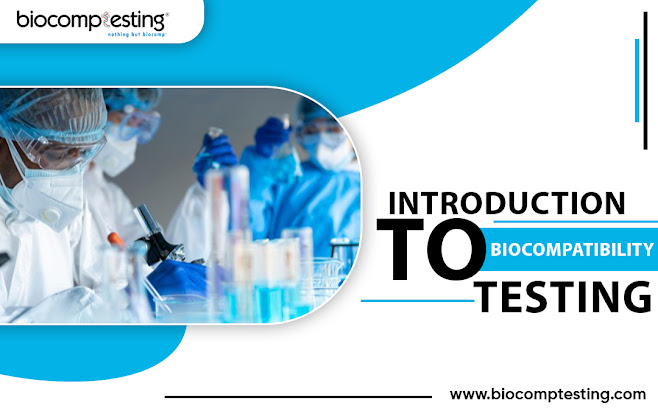Introduction to Biocompatibility Testing
What makes a medical gadget biocompatible is how it interacts with the patient's tissues and physiological systems. During a device's total safety review, analysts consider its biocompatibility. To determine whether a device is biocompatible, scientists use analytical chemistry, in vitro testing, and animal models. Biocompatibility testing for medical devices is affected by several things, such as
·
The physical and chemical properties of its constituent
elements
·
Which patient tissues will the device expose and for how
long?
Patient
safety is, of course, the first concern when conducting a biocompatibility
evaluation of a device. As they plot out their biocompatibility testing
programme, manufacturers should think about compliance risks and company
regulatory goals. Assessing biocompatibility
testing for dental materials is, by definition, a risk assessment. Neither
the devices nor their components are completely safe. Device designers strive
to ensure patients receive the most benefit with the least amount of risk.
When it comes to biocompatibility
testing, what are the standards set by the FDA and the EU/ISO?
Consulting ISO Standard 10993, biocompatibility
testing for medical devices, provides a better understanding of
biocompatibility standards. There are a total of 19 parts to the standard, with
Part 1 guiding test selection, Part 2 discussing animal welfare regulations,
and Parts 3–19 outlining specific test protocols or other testing-related
matters. To view a list of all the sections of ISO 10993, go here.
In both Asia and Europe, testing methods that follow the guidelines laid out in
the ISO 10993 series of standards are considered valid. The FDA published the
Blue Book Memorandum G95-1 in 1995, which superseded the tripartite guidance,
the previous standard for biocompatibility testing. The Food and Drug
Administration has mostly followed the ISO standard, although there are a few
areas where FDA testing is more stringent.
When compared to the precise USP processes formerly utilised for FDA
submissions, the ISO test techniques differ marginally. Companies aiming to
register their product in both the U.S. and Europe should adhere to ISO test
methodologies because of the stringency of the procedures. It is important to
confirm FDA regulations, as more testing might be necessary. When compared to
USP and ISO tests, Japanese methods for sample preparation and analysis differ
marginally.
Do I Require Biocompatibility
Information?
Devices that come into close contact with tissues nearly always need
biocompatibility data. To ascertain whether biocompatibility testing for dental materials is necessary, consult
the ISO Materials Biocompatibility Matrix, a flowchart from ISO 10993-1.
Companies typically pay for and conduct their biocompatibility testing for medical devices. If you have any of
the following biocompatibility data, you might be able to cut down on the
testing required for a particular product.
If you have data from a prior submission and would like to use it with your
current equipment, keep the following in mind: If any of the following regions
undergo substantial alterations, confirmatory testing is required:
• The methods of sterilisation;
•
The chemical composition of materials;
•
The nature of patient interaction;
•
The manufacturing procedures;
•
The materials' selection
Manufacturers should procure duplicates of the first research reports if vendor
data is employed. The reports should have come from a laboratory with seasoned
employees, a history of successful cGMP/GLP compliance, and an animal science
programme approved by AAALAC. It is common practice for manufacturers to
undertake confirmatory testing, such as research on hemocompatibility and
cytotoxicity.
Analytical data: To prove that their
product poses little risk in general or of causing a specific biological
consequence, manufacturers may rely on analytical evidence. Section 18 of the
Chemical Characterization of Materials section of ISO Standard 10993 partially
outlines this procedure.
Clinical data: It can be utilised to
meet the requirements of certain biological effects categories outlined in the
ISO 10993-1 test selection matrix. The data could originate from the device's
clinical studies, from the use of similar devices in the past, or from predictive
devices.
Conclusion
The majority of biocompatibility service providers are the subject of ongoing
investigation and examination within the testing business. Here at
biocomptesting.com, we believe in providing highly specialised services that
are solely dedicated to biocompatibility
testing for dental materials. Our business model is based on providing
comprehensive solutions for biocompatibility alone, as opposed to other service
providers that offer a wide range of services.



Comments
Post a Comment